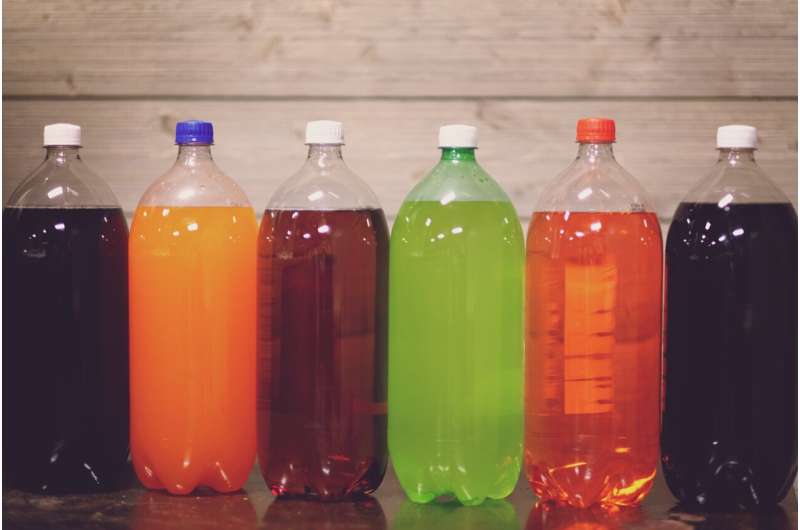Pop, soda or coke? The fizzy history behind America's favorite linguistic debate

Lisa Lock
scientific editor

Andrew Zinin
lead editor

With burgers sizzling and classic rock thumping, many Americans revel in summer cookouts—at least until that wayward cousin asks for a "pop" in soda country, or even worse, a "coke" when they actually want a Sprite.
Few have bubbled quite as long and effervescently as the one over whether a generic soft drink should be called a soda, pop or coke.
The word you use generally boils down to : Midwesterners enjoy a good pop, while soda is tops in the North and far West. Southerners, long the cultural mavericks, don't bat an eyelash asking for coke—lowercase—before homing in on exactly the type they want: Perhaps a root beer or a Coke, uppercase.
, I'm less interested in this regional divide and far more fascinated by the unexpected history behind how a fizzy "health" drink from the early 1800s spawned the modern soft drink's many names and iterations.
Bubbles, anyone?
Foods and drinks might seem like a modern phenomenon, but the urge to inspired what might be called a soda revolution in the 1800s.
The process of carbonating water was . By the early 1800s, this carbonated water had and was often referred to as "soda water." The word "soda" "sodium," since these drinks often contained salts, which were then believed to have healing properties.
Given its alleged curative effects for health issues such as indigestion, at , innovative devices that created carbonated water to be sold by the glass. A chemistry professor, , set up the first such device in a drugstore in New Haven, Connecticut, in 1806. Its eventual success inspired a boom of soda fountains in drugstores and health spas.
By the mid-1800s, pharmacists were creating , such as sassafras-based , at their soda fountains, often marketing them as cures for everything to foul moods.
These flavored, sweetened versions gave rise to the linking of the word "soda" with a sweetened carbonated beverage, as opposed to simple, carbonated water.
—today's popular term for such sparkling water—was around, too. But it was used only for the naturally carbonated mineral water from the German town . Unlike Perrier, sourced similarly from a specific spring in France, seltzer made the leap to becoming a generic term for fizzy water.
Regional naming patterns
So how did "soda" come to be called so many different things in different places?
It all stems from a mix of economic enterprise and linguistic ingenuity.
The popularity of "soda" in the Northeast likely reflects the soda fountain's longer history in the region. Since a lot of Americans living in the Northeast in the mid-to-late 1800s, the name likely traveled west with them.
As for the Midwestern preference for "pop"—well, the earliest American use of the term to refer to a sparkling beverage in the name of a flavored version called "ginger pop." Such ginger-flavored pop, though, was around in Britain by 1816, since a Newcastle songbook is where you can first . The "pop" seems to be onomatopoeic for the noise made when the cork was released from the bottle before drinking.
Linguists don't fully know why "pop" became so popular in the Midwest. But one theory links it to a , Feigenson Brothers Bottling Works—today known as Faygo Beverages—that used "pop" in the name of the sodas they marketed and sold. Another theory suggests that because in the region, soda drinkers were more likely to hear the "pop" sound than in the Northeast, where soda fountains reigned.
As for using coke generically, the was served in 1886 by Dr. John Pemberton, a pharmacist at Jacobs' Pharmacy in Atlanta and the founder of the company. In the 1900s, the Coca-Cola company the use of "Coke" for "Coca-Cola." But that ship had already sailed. Since Coca-Cola originated and was overwhelmingly popular in the South, its generic use grew out of the fact that people almost always asked for "Coke."
As with Jell-O, Kleenex, Band-Aids and seltzer, .
What's soft about it?
Speaking of soft drinks, what's up with that term?
It was originally used to distinguish from "hard drinks," or beverages containing spirits.
Interestingly, the original —resembling a type of alcoholic "health" drink popular overseas, . But Pemberton went on to develop a "soft" version a few years later to be .
Due to the growing popularity of soda water concoctions, eventually "soft drink" came to mean only such sweetened carbonated beverages, a linguistic testament to America's enduring love affair with sugar and bubbles.
With the average American guzzling per year, you can call it whatever you want. Just don't call it healthy.
Provided by The Conversation
This article is republished from under a Creative Commons license. Read the .![]()
















